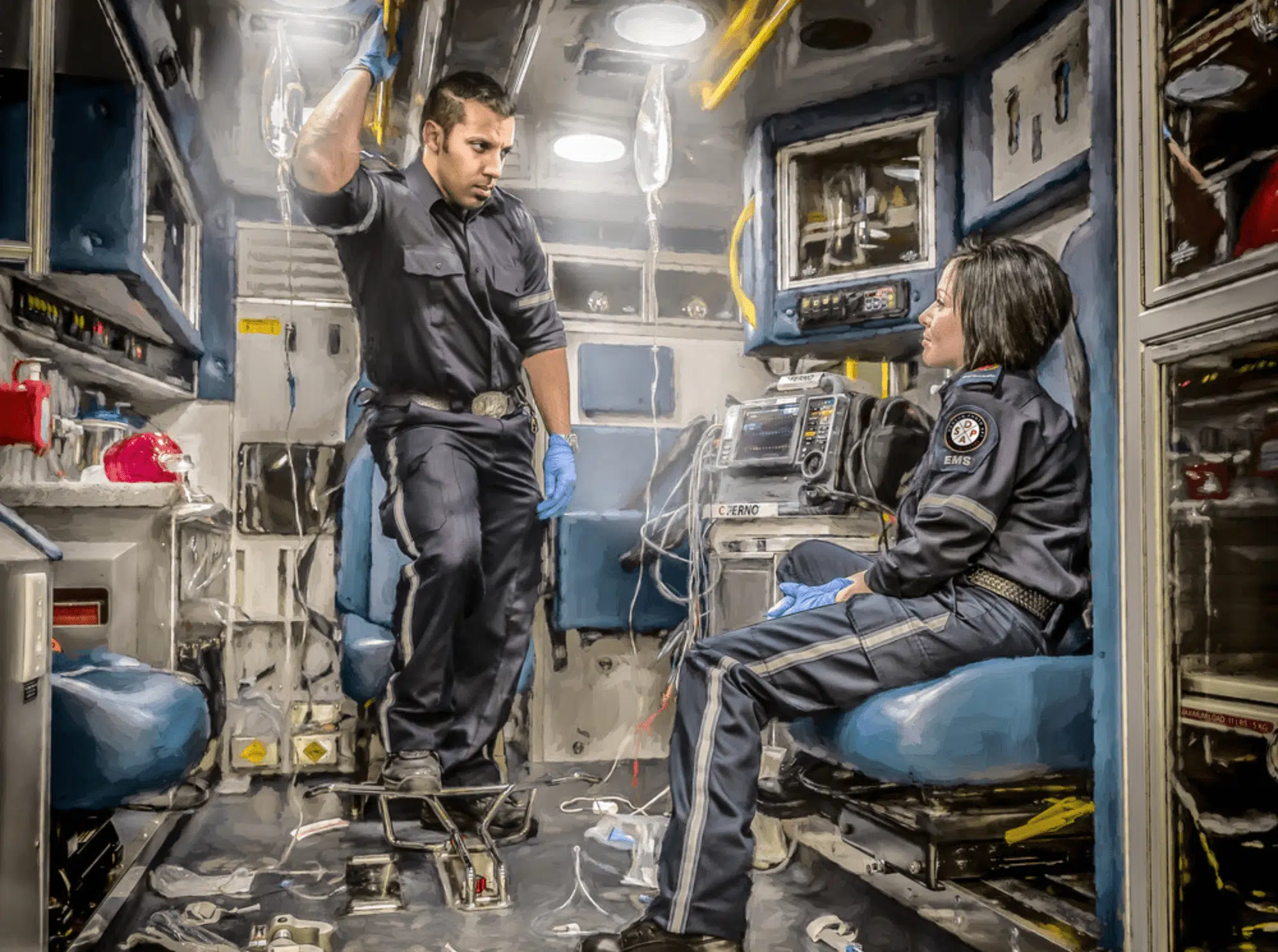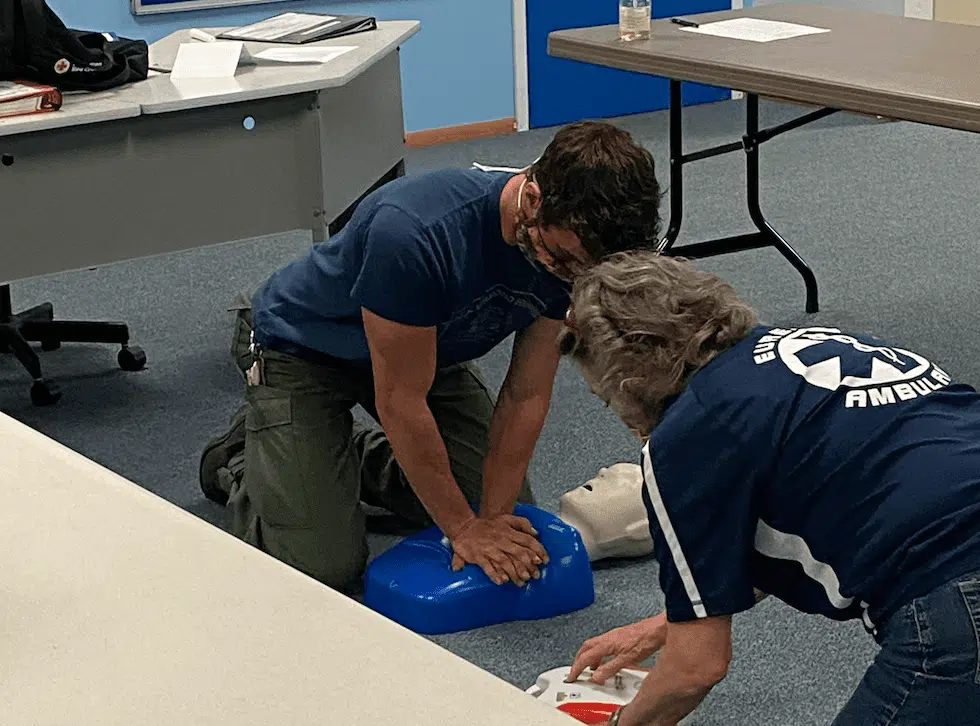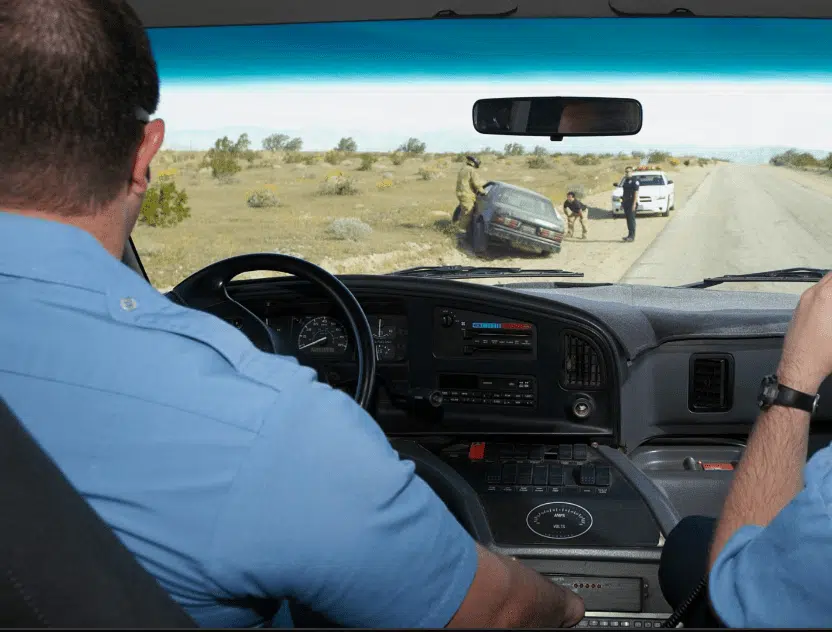Why Consider Joining The Eureka Volunteer Ambulance Service?
Satisfaction of Serving Others
People helping people right here in our own community.
Enhance Your Skills & Capabilities
Learn to render emergency medical care to others in their time of real need
Select Your Level of Involvement
Four opportunities to consider to match your time, talents and commitment

Picture Courtesy of Dansun Photo Art
1. Become an EMT with the
Eureka Volunteer Ambulance Service
Few things are as rewarding as helping others in times of dire need.
Becoming an EMT
– Emergency Medical Technician –
not only provides that opportunity but it equips one with skills and capabilities that are life changing and last a lifetime.
Steps to Becoming an EMT for the Eureka Volunteer Ambulance Service
1. Investigating the Possibilities
- Am I motivated to serve in an emergency medical response capacity in support of our greater Eureka community?
- Am I willing put in the time and effort to complete the training, testing and practical experience to become an EMT?
- Am I capable of helping patients in emergency care situations that often include blood, vomit, excrement, etc.?
- As an EMT will I be available to answer emergency care calls, attend ongoing training and support the EVAS?
2. Application and Orientation
- Access, complete and submit the EVAS EMT Application (download form from this website)
- Schedule an orientation interview to allow EVAS to get to know your situation and to get your questions answered.
- Commit to providing the EVAS at least one year of service upon licensing.
- Cost/Expense
Immunizations: Hepatitis A&B and Flu $190 // Class Supplies: $25
3. Pre-License Training Courses
Courses scheduled twice each year:
Fall (September – December) Winter (January – April)
- Weekly Schedule: 1 in-class session plus 10 to 12 hour of home assignments
- In-Class Location: EVAS facilities in Eureka
- Course Content: See content overview detailed below
- Course Exams: Practical (hands-on) and Written Examination
- Course Text: Emergency Care by Daniel J Limmer & Michael O’Keefe, 13th or current edition
- Cost/Expense
Text & Materials: $200-$225 // CPR Training & Card: $25
4. Licensing Examination
Candidates seeking EMT Certification must complete at least one of the follow exams:
- Dynamic Path Exam: 70-100 Questions, No time limit, Administered in Eureka Secures Montana Only Licensure – Appropriate for EVAS EMTs
- National Registry Exam: 2 hour time limit, 70-120 Adaptive Type Questions, Administered in Kalispell, Missoula, Spokane
Secures National Certification – honored nationwide
5. Welcome to the EVAS Team
- Full EMT membership upon completion of a six (6) month probationary period of service.
- Requirements: 2 runs/month or 48 hours on call (or combination)
- Attend 6 EVAS operations meetings and 9 training sessions per year
After 1 year of satisfactory service, EVAS is open to considering reimbursement of one’s pre-licensing expenses.
Course Content Overview
Pre-Licensing Training
Preparatory Topics:
Intro to Emergency Medical Care – Human Body – Legal/Ethical Issues – Lifting/Moving Patients – EMT Safety
Patient Assessment
Trauma Patients – Medical Patients – Initial – Ongoing – Scene Size Up – Communication – Documentation
Medical Emergencies
Respiratory – Cardiac – Behavioral – Allergic – Acute Abdominal – Poisoning – Obstetrics/Gynecological – Diabetic
Traumas
Bleeding/Shock – Soft Tissue Injuries – Musculoskeleton Injuries – Head/Spine
Special Patient Populations
Infants – Children – Geriatric – Special Needs
Airway Management including Advanced Airway Management
Operations
Ambulance – Equipment – Access – Managing Hazards – Multiple Casualties
Eureka Volunteer Ambulance Service
Facilities, Equipment and Operations – Assisting on actual patient runs in support of EVAS EMTs
CPR Certification
2. Emergency Medical Responders (EMR)
-
For those that want to get involved incrementally, working toward becoming an EMR might be a perfect first.
-
The requirements to become an EMR involve approximately 45+ hours of training that includes CPR certification.
-
EMR training is available locally and at a compatible schedule.
-
As an EMR one is not permitted to respond to calls on their own, but they can accompany an EMT and get a first hand feel for emergency response and better determine how they can might proceed toward service or even becoming an EMT.

3. Certified Ambulance Drivers
- Getting behind the wheel of an ambulance in response to a call requires special training and certification.
- Drivers need to be CPR Certified and are nominally compensated for their time in service.
- While their focus is primarily on transportation, drivers become an integral part of the emergency medical response team.

4. Volunteers
- In support of our EVAS, we’re blessed to have friends and neighbors who simply ask how they can help.
- There are often community outreach needs that people can fill along with organized projects in and around our ambulance barn.
- Just let us know of your willingness to help so we can contact you when a specific need arises.

